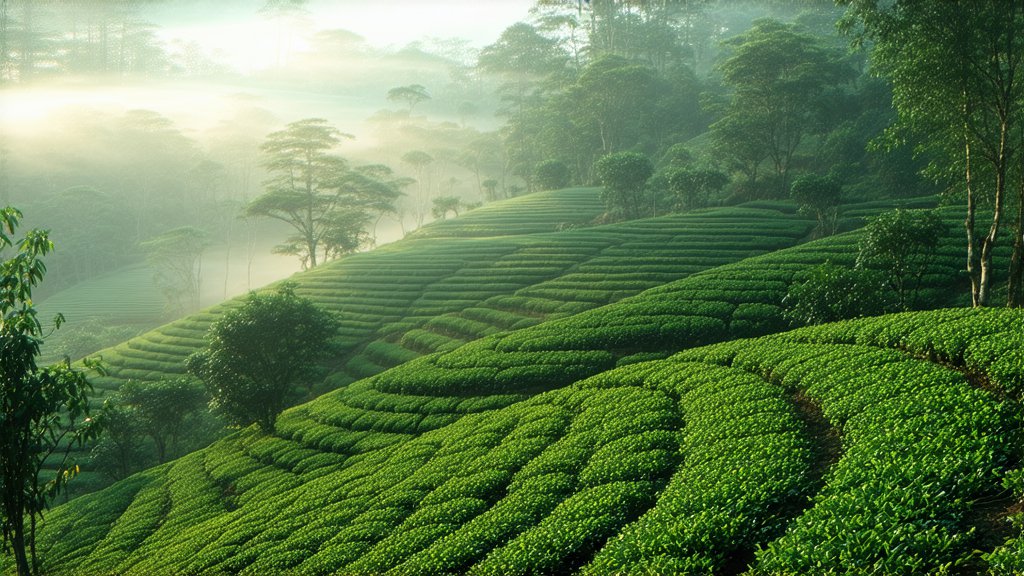
The world of tea is vast and varied, with each type offering its own unique characteristics and history. Among these, oolong tea stands out as a bridge between the green and black teas, combining the best of both worlds. In this article, we delve into the fascinating realm of Tieguanyin, one of the most renowned varieties of Chinese oolong tea.
Historical Background
Tieguanyin, often referred to as the "Iron Goddess of Mercy," has a rich history that dates back to the early Qing Dynasty. It originated in the Anxi region of Fujian Province, China. Legend has it that the tea was discovered by a poor scholar who found a divine tree growing from a crack in a sacred rock. The scholar named the tea after his dream, in which he saw the Bodhisattva Guanyin bestowing upon him this miraculous plant. Since then, Tieguanyin has been celebrated not only for its exquisite flavor but also for its spiritual significance.
Types and Variations
Tieguanyin comes in several variations, primarily distinguished by their roasting levels and processing methods. The two main types are Green Tieguanyin and Roasted Tieguanyin. Green Tieguanyin undergoes less roasting and retains a fresher, more vegetal flavor profile. On the other hand, Roasted Tieguanyin is more heavily roasted, resulting in a deeper, toastier aroma and a smoother taste. Each type offers a unique experience for the tea connoisseur.
Crafting the Perfect Cup
The production of Tieguanyin is an art form that involves meticulous attention to detail. The process begins with the careful selection of tea leaves, typically picked from mature bushes to ensure a robust flavor. The leaves are then withered under the sun to reduce moisture content before being shaken to further bruise the edges. This step is crucial as it releases enzymes that contribute to the tea's distinctive aroma.
Next, the leaves undergo multiple rounds of rolling and shaping, followed by oxidation. The level of oxidation can vary depending on whether the tea is to be Green or Roasted Tieguanyin. Once oxidized, the leaves are fired in woks or ovens to halt enzymatic activity and develop the desired flavor profile. Finally, the tea is dried and sorted to remove any imperfections.
The Gongfu Tea Ceremony
To truly appreciate the depth and complexity of Tieguanyin, one must engage in the traditional Gongfu tea ceremony. This elaborate ritual emphasizes precision and mindfulness, transforming the simple act of drinking tea into a meditative experience. The ceremony typically involves a small clay teapot and cups, allowing for controlled infusion and optimal flavor extraction.
During the ceremony, hot water is poured over the tea leaves in a series of short steepings, each revealing new layers of flavor. The first infusion is often discarded as a rinse, while subsequent steepings are savored slowly, allowing the drinker to fully experience the tea's evolving taste and aroma. The Gongfu method ensures that every cup ofs Tieguanyin is a masterpiece of craftsmanship.
Tea Tasting Notes
Tasting Tieguanyin is an adventure for the senses. The tea is known for its floral and fruity notes, complemented by hints of woodiness and sweetness. The aroma is often described as reminiscent of orchids and honey, with a subtle smoky undertone in the case of Roasted Tieguanyin. On the palate, Tieguanyin offers a complex interplay of flavors, with a velvety texture and a long-lasting finish.
When evaluating Tieguanyin, pay attention to the color of the brewed tea, which should be a bright golden-yellow for Green Tieguanyin and a deeper amber for Roasted Tieguanyin. The leaves themselves should unfurl gracefully in the pot, revealing their full, lush shape. As you sip, take note of the tea's balance, complexity, and overall harmony. A well-crafted Tieguanyin will leave a lasting impression on your taste buds and soul.
Conclusion
Tieguanyin is more than just a tea; it is a cultural treasure that embodies the essence of Chinese tea heritage. From its legendary origins to its intricate production process and elegant tasting rituals, every aspect of Tieguanyin speaks to the artistry and dedication of those who have cultivated and enjoyed it for centuries. Whether you are a seasoned tea drinker or a curious novice, exploring the world of Tieguanyin is sure to be a rewarding and enlightening experience.